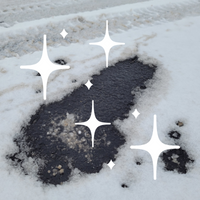 Using too much salt to de-ice can have negative impacts on our streams. Fortunately, municipalities and individuals are stepping up their efforts to use salt smartly. Check out some of our favorite salt tips.
Using too much salt to de-ice can have negative impacts on our streams. Fortunately, municipalities and individuals are stepping up their efforts to use salt smartly. Check out some of our favorite salt tips.
The Cuyahoga Soil and Water Conservation District has summarized best practices with an acronym that couldn’t be easier to remember: S.A.L.T.
Stuff: Road salt (sodium chloride) works best above 20°F. For colder temperatures, you can use a small amount of sand for added traction, or switch to melting product designed to work at colder temperatures.
Amount: Contrary to popular belief, spreading more salt does not improve deicing. One 12-ounce coffee cup full of salt is enough to cover about 10 standard sidewalk squares. There should be about 3 inches between salt granules. Using a spread helps ensure consistent spacing, and you always sweep up excess salt if you find you’ve used too much.
Location: Salt only belongs on your sidewalk and driveway. That means there’s no need to salt your lawn, flower beds, or the bases of trees. Accidentally applying salt to these areas will likely harm your plants!
Timing: Salt works best when applied before the snow falls or right after snow is removed from your sidewalk or driveway. Never apply salt when rain is in the forecast, as it will wash away into the storm drain and out into our waterways. While many people think of salt as “natural,” one teaspoon of salt permanently pollutes 5 gallons of freshwater, making it less suitable to support the fish and wildlife we love in our streams.
For more tips for managing salt use well for larger properties or businesses, our partner TMACOG has a YouTube video with more information.
